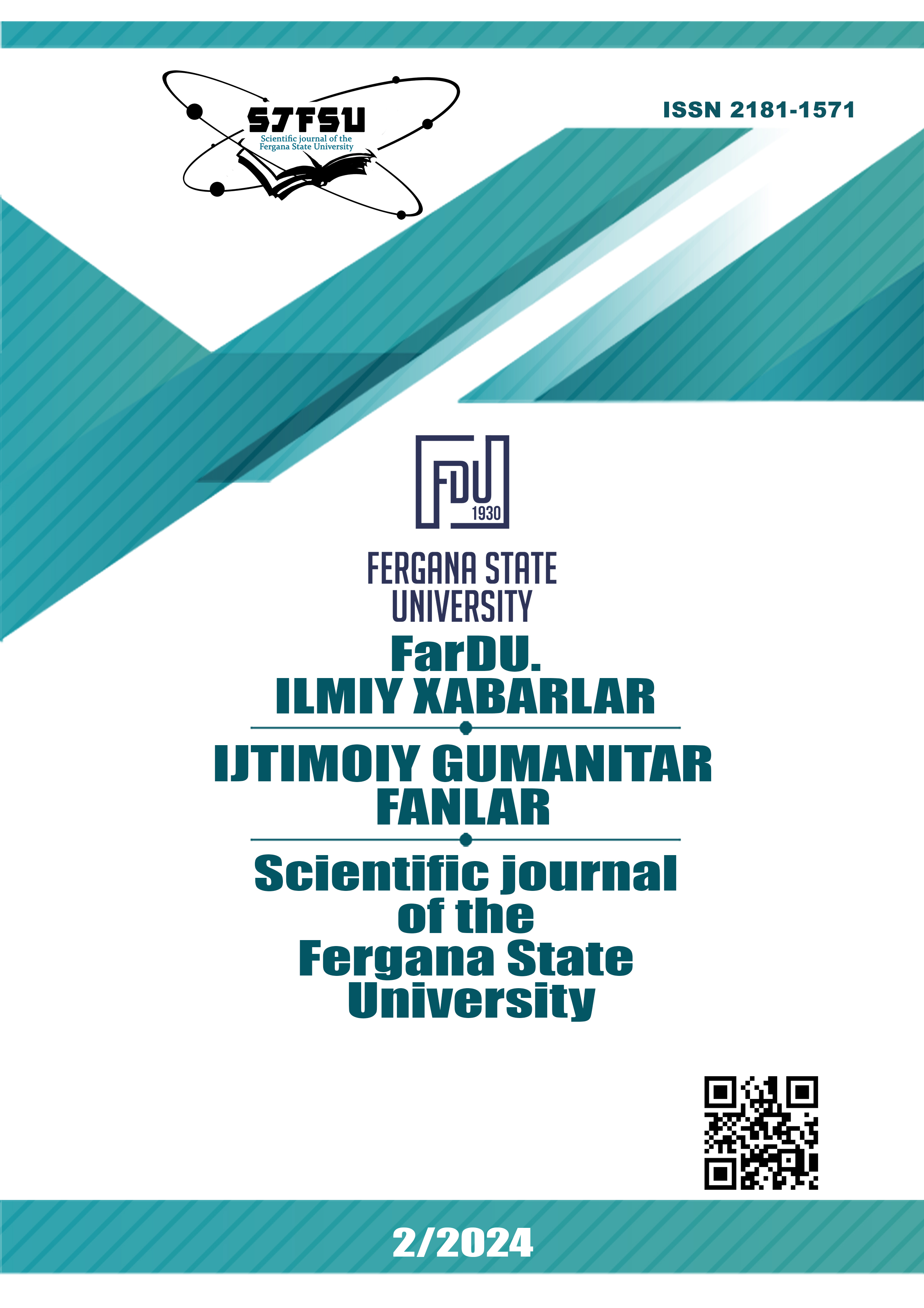PROMOTING ORAL COMMUNICATION THROUGH READING INTEGRATION
Keywords:
language education, oral communication skills, innovative approaches, reading materials, authentic language use, language classesAbstract
This article explores the hypothesis that incorporating reading materials in language classes can enhance students' oral communication skills. It must be mentioned about the importance of oral communication in language learning and the challenges that students often face in developing this skill. It introduces the hypothesis that integrating reading materials into language classes can help address these challenges and improve students' oral communication abilities. Additionally, it reviews existing literature on the topic, highlighting studies that have found a positive correlation between reading and oral communication skills.
References
Sherman, R., & Nguyen, T. (2018). Integrating reading materials for improved spoken language. TESOL Quarterly, 52(4), 567-585.
Smith, J. (2015). The benefits of incorporating reading materials in language classes. Journal of Language Education, 10(2), 45-62.
Xu, L., & Guo, X. (2017). Enhancing oral communication skills through reading materials. Language Teaching Research, 21(3), 321-340.
Grabe, W., & Stoller, F. L. (2011). Teaching and researching reading. Harlow, England: Pearson.
Santos, T. (2012). Exploring the role of extensive reading in promoting EFL/ESL learners' oral proficiency. RELC Journal, 43(2), 221-240Maley, A., & Peachey, N. (Eds.). (2015). Creativity in the English language classroom. British Council.
Hedge, T. (2003). Teaching and learning in the language classroom. Oxford: Oxford University Press.
Paradowski, M. B., & Bator, A. (2016). Receptive vocabulary size and its relationship to reading comprehension in L2. Studies in Second Language Learning and Teaching, 6(4), 643-673.
Downloads
Published
Issue
Section
License
Copyright (c) 2024 Scientific journal of the Fergana State University

This work is licensed under a Creative Commons Attribution-NonCommercial-NoDerivatives 4.0 International License.
Most read articles by the same author(s)
- Abbasova Nargiza Kabilovna, EVALUATING THE IMPACT OF DIGITAL TOOLS IN CLASSROOMS AND ONLINE LEARNING PLATFORMS , Scientific journal of the Fergana State University: No. 2 (2024): Scientific journal of the Fergana State University (Social humanities sciences)
- Abbasova Nargiza Kabilovna, Abduvaliyeva Mushtariybegim Ilxomjon qizi, WEATHER AND NATURAL PHENOMENA IN ENGLISH AND RUSSIAN PROVERBS: A STRUCTURAL ANALYSIS , Scientific journal of the Fergana State University: No. 2 (2025): FarDU ilmiy xabarlari jurnali (FILOLOGIYA)
- Abbasova Nargiza Kobilovna, Xakimova Zumradxon Qudratali qizi, SPEECH ACT AS AN IMPORTANT FUNCTION OF COMMUNICATION , Scientific journal of the Fergana State University: No. 6- TOM (2023): SPECIAL ISSUE
- Abbasova Nargiza Kabilovna, FORMATION OF FOREIGN-LANGUAGE COMMUNICATIVE COMPETENCES IN LANGUAGE LEARNERS USING ENGLISH PROVERBS AND SAYINGS , Scientific journal of the Fergana State University: No. 3 (2024): Scientific journal of the Fergana State University. Application set (Social humanities sciences)
- Abbasova Nargiza Kabilovna, Shikina Anastasiya Aleksandrovna, INTEGRATING AI INTO ESP COURSE TO IMPROVE LANGUAGE LEARNING THROUGH SMART AND EFFECTIVE STRATEGIES , Scientific journal of the Fergana State University: No. 2 (2025): FarDU ilmiy xabarlari jurnali (FILOLOGIYA)

